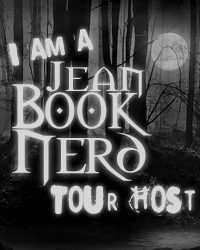The Art of Eating through the Zombie Apocalypse: A Cookbook and Culinary Survival Guide by Lauren Wilson
Just because the undead’s taste buds are atrophying doesn’t mean yours have to!
You duck into the safest-looking abandoned house you can find and hold your breath as you listen for the approaching zombie horde you’ve been running from all day. You hear a gurgling sound. Is it the undead? No—it’s your stomach.
When the zombie apocalypse tears down life and society as we know it, it will mean no more take out, no more brightly lit, immaculately organized aisles of food just waiting to be plucked effortlessly off the shelves. No more trips down to the local farmers’ market. No more microwaved meals in front of the TV or intimate dinner parties. No, when the undead rise, eating will be hard, and doing it successfully will become an art.
The Art of Eating through the Zombie Apocalypse is a cookbook and culinary field guide for the busy zpoc survivor. With more than 80 recipes (from Overnight of the Living Dead French Toast and It’s Not Easy Growing Greens Salad to Down & Out Sauerkraut, Honey & Blackberry Mead, and Twinkie Trifle), scads of gastronomic survival tips, and dozens of diagrams and illustrations that help you scavenge, forage, and improvise your way to an artful post-apocalypse meal. The Art of Eating is the ideal handbook for efficient food sourcing and inventive meal preparation in the event of an undead uprising.
Whether you decide to hole up in your own home or bug out into the wilderness, whether you prefer to scavenge the dregs of society or try your hand at apocalyptic agriculture, and regardless of your level of skill or preparation, The Art of Eating will help you navigate the wasteland and make the most of what you eat.
EXCERPT
You duck into the safest-looking abandoned house you can find and hold your breath as you listen for the approaching zombie horde you’ve been running from all day. You hear a gurgling sound. Is it the undead? No—it’s your stomach.
When the zombie apocalypse tears down life and society as we know it, it will mean no more take out, no more brightly lit, immaculately organized aisles of food just waiting to be plucked effortlessly off the shelves. No more trips down to the local farmers’ market. No more microwaved meals in front of the TV or intimate dinner parties. No, when the undead rise, eating will be hard, and doing it successfully will become an art.
The Art of Eating through the Zombie Apocalypse is a cookbook and culinary field guide for the busy zpoc survivor. With more than 80 recipes (from Overnight of the Living Dead French Toast and It’s Not Easy Growing Greens Salad to Down & Out Sauerkraut, Honey & Blackberry Mead, and Twinkie Trifle), scads of gastronomic survival tips, and dozens of diagrams and illustrations that help you scavenge, forage, and improvise your way to an artful post-apocalypse meal. The Art of Eating is the ideal handbook for efficient food sourcing and inventive meal preparation in the event of an undead uprising.
Whether you decide to hole up in your own home or bug out into the wilderness, whether you prefer to scavenge the dregs of society or try your hand at apocalyptic agriculture, and regardless of your level of skill or preparation, The Art of Eating will help you navigate the wasteland and make the most of what you eat.
EXCERPT
Bugging In or Nouveau Home Cuisine
The recipes here are quick, simple, calorie rich, and, perhaps most importantly, comforting. Yes, that’s right, they’re the zpoc equivalent of the post-financial-crisis comfort food trend. So get ready for warm, indulgent, and satisfying meals that can be fixed in a jiffy and/or need minimal attendance. These recipes are geared to the first days of the outbreak—when the power is either still running or has just gone out—and so, will focus on perishable ingredients that most people would have on hand in their refrigerators and freezers.
The recipes here are quick, simple, calorie rich, and, perhaps most importantly, comforting. Yes, that’s right, they’re the zpoc equivalent of the post-financial-crisis comfort food trend. So get ready for warm, indulgent, and satisfying meals that can be fixed in a jiffy and/or need minimal attendance. These recipes are geared to the first days of the outbreak—when the power is either still running or has just gone out—and so, will focus on perishable ingredients that most people would have on hand in their refrigerators and freezers.
Overnight of the Living Dead French Toast
Yields: 4 Hungry Survivor servings, 6 Regular Joe servings
Welcome to the zombie apocalypse! Tomorrow is a big day: you will be losing your head (hopefully not literally) trying to fend off the newly infected. On top of that, those pesky little weak spots in your fortress will surely present themselves, leaving you overwhelmed with survival and physical defense–focused activities. Before you go to sleep tonight (if it even seems safe to do so), why not plan ahead for breakfast? Not only will it help use up some of your perishables (milk, eggs, butter, bread), it will also give you a calorie-rich jump-start to your undead-filled day. If the power has already gone out, reduce the amount of time you soak the bread to a couple of hours and use an Oven Hack (page 6) to cook this bad boy.
Requires:
Chef’s or survival knife and cutting board
1 bread knife
1 small mixing bowl
1 mixing spoon
1 fireproof baking dish (preferably 7" x 11")
1 large bowl
1 whisk (or fork)
Piece of foil, to cover baking dish
Heat Source:
Indirect, conventional oven or other Oven Hack (page 6)
Time:
10 minutes prep
4-8 hours inactive soaking time
35 minutes unattended cooking time
Ingredients:
¼ c. (4 tbsp.) butter, melted
½ c. brown sugar
12 oz. bread (challah, raisin, French baguette, Wonder—whatever you got, preferably a mix of several different kinds), sliced into strips 2–3 fingers wide
½ c. dried cranberries or raisins
6 eggs
2 tbsp. granulated sugar
1 ½ c. milk, cream, or combination
1 tbsp. vanilla extract
1 tsp. ground cinnamon
½ tsp. ground nutmeg
½ tsp. ground ginger
Pinch of salt
3 tbsp. rum, orange liqueur, or brandy (optional)
1 c. nuts (walnuts, pecans, or almonds), roughly chopped and preferably toasted
Maple syrup, to taste
Method:
1. Mix together the melted butter and brown sugar in a small mixing bowl. Spread the mixture along
the bottom of the baking dish.
2. Put down a layer of bread fingers, overlapping and filling gaps where needed. Sprinkle with dried
fruit. Repeat with remaining bread and fruit.
3. In a large mixing bowl, whisk eggs and granulated sugar together until the sugar has dissolved,
about 1 minute. Add the milk/cream, vanilla, cinnamon, nutmeg, ginger, pinch of salt, and
liquor/liqueur (if using). Whisk until incorporated.
4. Pour the custard over the bread and dried fruit, sweeping back and forth to moisten the whole top
layer, filling any nooks and crannies. Cover with foil and let sit for 2 hours (no refrigeration) or at
least 4 hours to overnight (in the fridge).
5. Preheat oven (for perhaps the last time!) to 375°F or set up an Oven Hack (see Judging
Temperature, page 7).
6. Remove foil from the baking dish and sprinkle with the toasted nuts (if using). Drizzle lightly
with maple syrup.
7. Bake uncovered for 30 minutes, then cover and bake for another 15 minutes to avoid
over-browning. Check after 20 minutes or so—cooking time will vary widely depending on your
setup.
8. The French toast is ready when the custard at the center feels set (i.e., not jiggly, squishy, or raw).
Let stand for 5–10 minutes, then drizzle liberally with more maple syrup before tucking in.
AUTHOR











































